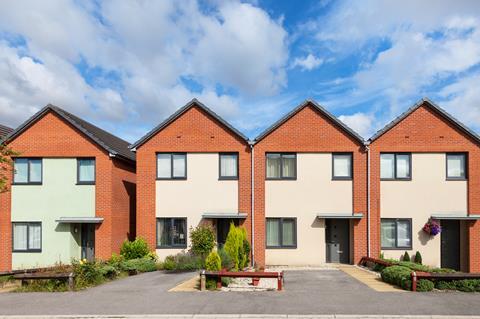One positive thing to emerge from the first stage of this coronavirus rewiring is that institutional investors and forward-thinking fund managers have not forgotten previous commitments to environmental, social and corporate governance.

A clear ESG strategy is now a formal part of all real estate capital raising, which is excellent news, as the issues facing society have intensified, not gone away.
It is worth reflecting on the received wisdom about social impact and pour cold water on woolly thinking. At the forefront of this is whether funding Section 106-related affordable housing does deliver social impact. I have seen a number of pitchbooks highlighting the good that will be done by fund managers for affordable housing, made up overwhelmingly of S106 delivery.
These funds generally buy or forward fund the S106 housing that developers of market-priced housing are required by local authorities to build under planning permissions. They work with registered providers who manage that housing for, or rent it from, the funds. The registered providers may be not-for-profit charities, mutuals, or for-profit registered providers (FPRPs).
When only not-for-profit registered providers existed, developers would sell affordable housing for about 60% of market value after a loose auction or off-market deal with a council-preferred provider. This covered the build cost and allowed registered providers to keep rents low. Providers were not commercially motivated or seeking the arbitrage of bringing assets up to market value.

FPRPs and institutional demand for housing investment have changed the dynamics. The first big sign of this was Blackstone buying a stake in Sage Housing, having no doubt spotted opportunities to make management efficient and get exposure to secure income flow and asset value arbitrage.
Early investors were confident the market would gain significant traction and the weight of capital chasing a slow-growing amount of stock would lead the next purchasers to accept lower returns (and pay more) for the same asset pool. The for-profit sectors have improved margins and evolved different types of affordable housing to fit S106 definitions: shared equity, 20% discount for sale/rent and true social housing for the poorest.
Shared equity housing sells at minimal discounts to market rates but is included, perhaps disingenuously, in the affordable contribution. Structured sale and leasebacks and income strips have also increased capital values by positioning assets in a sweet spot for annuity liability-offset seekers, such as pension funds and insurers.
The increase of capital targeting this sector has pushed pricing up but not increased affordable housing stock materially above what was required for S106 agreements or benefited people needing low-cost housing. Instead, it has increased the amount of money made on S106 affordable housing by landowners, developers and private investors. This might be valid, sensibly risk-adjusted and legal for-profit business, but it is not social impact. It does not add new housing stock not otherwise required by authorities as a quid pro quo for market development gain.
So what is social impact in relation to affordable housing? Plainly, the delivery of additional, truly affordable housing over and above what authorities require. I have yet to hear of a swathe of private investors and for-profit registered providers seeking planning for and building 100% affordable (ie. social) housing schemes, rather than a combination of market and affordable.
A side-effect of the increasing capital targeting this sector might be that sites for affordable housing become viable in their own right, which would contribute social impact. If the planning system also allowed a presumption in favour of 100% truly affordable housing in the green belt or on metropolitan open land, this could bring forward additional housing stock. But again, investors should think carefully before deeming it social impact – it might just be a shrewd way to promote profitably land otherwise locked out of the development arena.
Hugo Llewelyn is managing director of Newcore Capital





























No comments yet